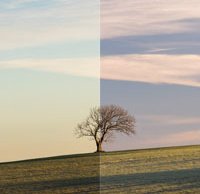How to use a polarizing filter to improve your photography
posted Tuesday, June 11, 2019 at 6:30 PM EDT

One of the most important tools in a landscape photographer's kit is a polarizing filter. Unlike a graduated neutral density filter, the effects of the polarizer cannot be easily replicated in Photoshop or other photo editing software. In the video below, photographer Mads Peter Iversen discusses the various ways you can use a polarizing filter to enhance your images.
Essentially, a polarizing filter reduces the visibility of reflected light hitting your image sensor. When light hits an object, some light is reflected and depending on the surface of the object, varying amounts of this light will be polarized, which results in greater reflections and less saturated colors. The actual phenomenon is a bit more complicated, of course, but the purpose of a circular polarizing filter is to reduce or entirely eliminate polarized light in your images. This results in water and glass with fewer reflections, vegetation appearing more saturated, reduced haze and bluer skies. To learn more about the utility of a polarizing filter in your photography, watch the full video below.
To see more of Mads Peter Iversen's work, visit his website and YouTube channel.
(Via Mads Peter Iversen)